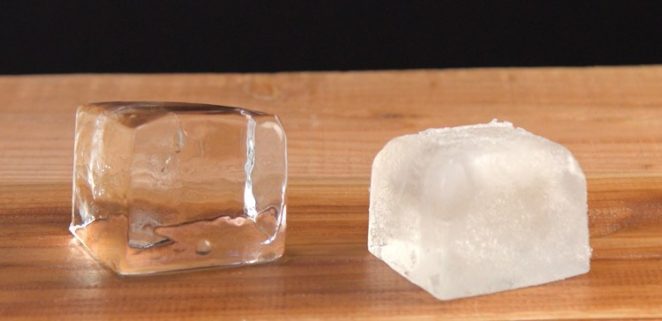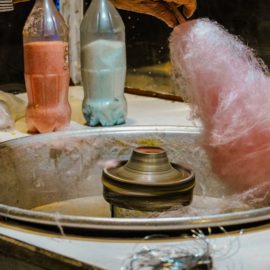
Have you ever wondered how and why the ice that you bought was cloudy? Well, here’s the untold truth behind cloudy ice.
Cloudy ice is either made from tap water or unfiltered water. Tap water is what we get from the city or municipality. We use it for drinking, cooking meals, doing the laundry, and washing dishes. In most countries, tap water is generally safe to drink. Or is it?
The main reason the ice that you bought from the store or the bartender at the bar served you was cloudy or milky is because of its poor purity—contained impurities or contaminants. The more cloudy the ice, the more “dirty” it is.
You might also like: What Exactly Is Hardness of Water?
Or perhaps the ice machine is already “old school”(the ice must have been bought from a nearby ice factory operating for decades) and hasn’t been touched for an upgrade in years or their facility is just tidy and there is risk of contamination.
Table of Contents
Now, what are these impurities?
There are a lot of impurities that may be in water. These may include dust, sand, clay dirt, lime, fluoride, scale, and calcium. Every impurity has its specific risk that has detrimental effect to water. Often, water contains dirt since even if water pipes are intact, rust may be present in water if they start to corrode.
What about contaminants?
If water is not treated or sterilized, it is at risk of being contaminated with various microorganisms (E. coli for example). Some waterborne microorganisms may cause Illnesses.
If you get served of clear, transparent and sparkling ice to fill your glass of iced tea at a fancy restaurant, you’re good to go. It must have been made from treated water.
There are several ways to treat water. One of the most common and effective ways to purify water is Reverse Osmosis. It is used in most food factories and many industrial facilities (beverage manufacturers, in particular). Remember, a single impurity in considerably large amount in water may affect the total quality of the finished product it may be used for. That is why food manufacturers pay close attention to producing high quality water before serving it for product manufacturing.
How does Reverse Osmosis work?
Well, it is like purifying the water by using a partially permeable membrane. The purpose is to remove the unwanted in water: the impurities such as dissolved salts and microorganisms such as bacteria and viruses.
Totally hygienic.
So what if the ice is clear?
It is pure, clean, and safe to consume, and unlike cloudy ice, it is odorless, tastes better and melts slowly when served.
So next time you want your glass served with ice, look for that clear, transparent and shining like diamond ones.
Are there alternatives to Reverse Osmosis?
There are many alternatives to Reverse Osmosis like distillation and filtration. The method to be used may depend on how they like the water (or ice) to be. Another thing is the limitation of a method that can be achieved by another.
You might also like: Distilled Water And Purified Water: Are They The Same?
Take Reverse Osmosis for example. This method is not very economical. While you’re getting a gallon of water from this method, you are wasting about 4 gallons as well. Another thing is that along with what you are trying to filter (impurities and contaminants) with Reverse Osmosis, you may be removing minerals that are beneficial to health.
Is it still safe to use cloudy ice?
Now that you know, is it safe to consume cloudy ice? Should this untold truth about cloudy ice refrain you from using it for your beverage?
Not really. Cloudy appearance of ice (like the ones you made home) doesn’t automatically mean it is dangerous. The quality of it will largely depend on the quality of water.
But using clear ice is definitely a healthier choice.


